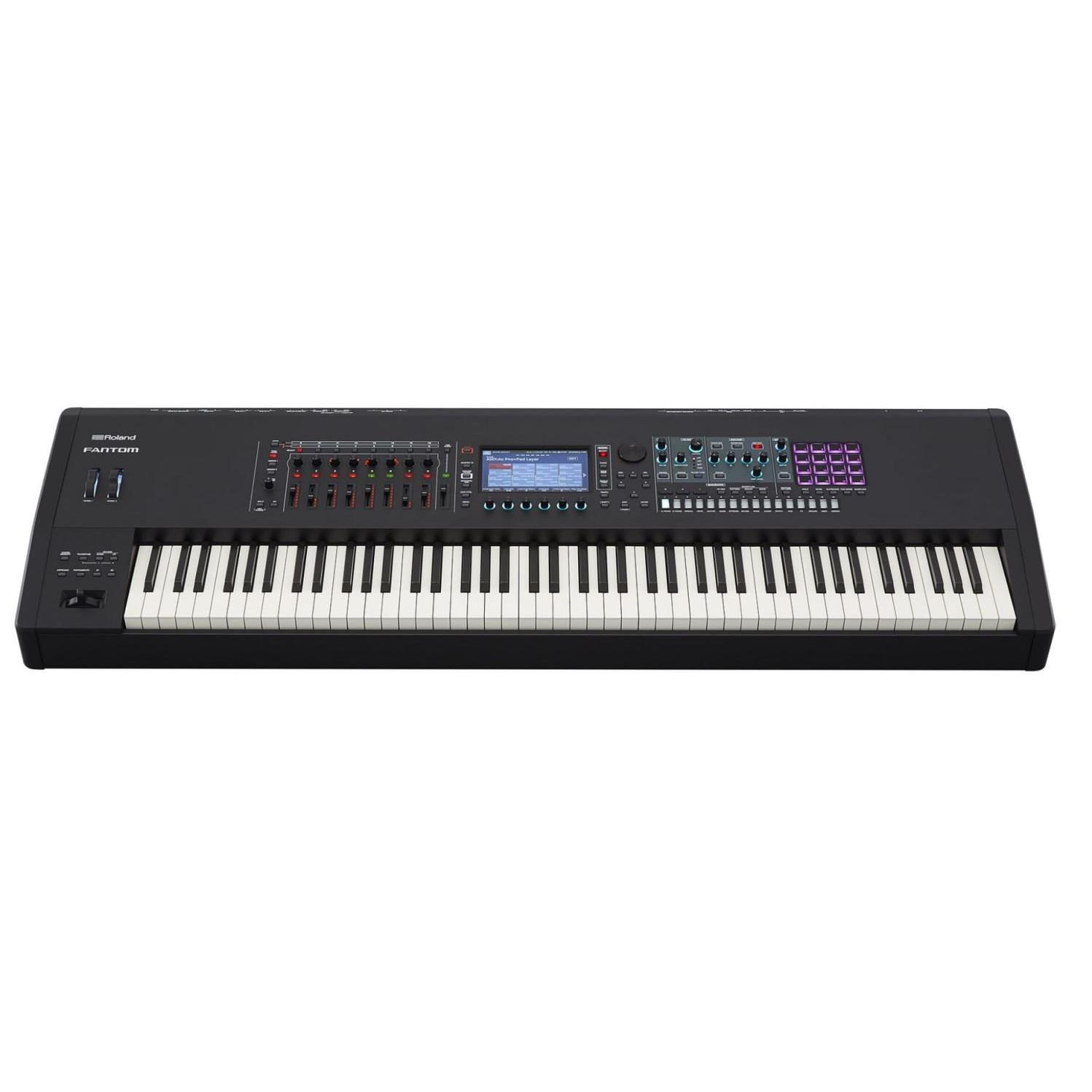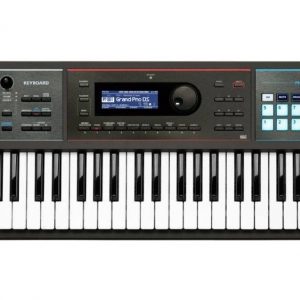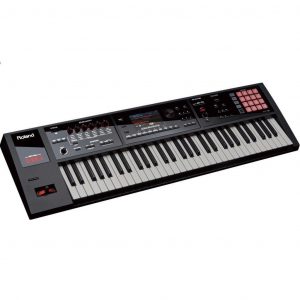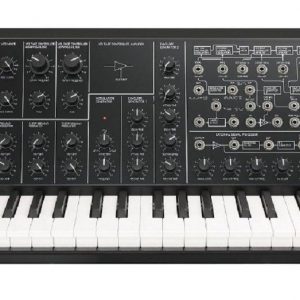Description
Roland Fantom 8 Synthesizer: The Ultimate Synth Powerhouse
Roland is a leading name in the world of electronic instruments and music production technology. Their Fantom series has been the epitome of excellence among the synthesizers for years. The Roland Fantom 8 Synthesizer represents the latest release in this line and is undoubtedly the most advanced one yet.
With a powerful processing engine and a sleek design, the Fantom 8 is more than just a synthesizer. It is a comprehensive music production workstation that can handle virtually anything you can throw at it, whether you’re a professional musician, music producer, or sound designer.
Design and Construction
The Roland Fantom 8 is massive, measuring over 57 inches in length and weighing over 75 pounds. Despite its size, the synth is incredibly well-built with a premium look and feel. The synth offers an 88-note premium hammer-action keyboard with aftertouch, which provides a fantastic playing experience, making it an excellent tool for pianists and keyboardists.
Specs and Features
The Roland Fantom 8 is a true powerhouse when it comes to sound synthesis, offering a range of modern and vintage synth engines. Its flagship V-Piano engine provides an infinite range of piano sounds with the added benefit of creating custom pianos using the instrument’s built-in editor. Additionally, the PCM engine offers an extensive library of acoustic and electronic sounds, including drums, guitars, brass, and strings.
The synth features three oscillators per voice, comprehensive filters, and high-quality effects, making it easily one of the most versatile synths on the market. With over 3,500 presets, you can be sure that you’ll never run out of new sounds to explore.
The Roland Fantom 8 also features advanced DAW integration capabilities, allowing producers and musicians to control their DAW within the instrument. The synth is compatible with all major DAWs, enabling hassle-free workflow.
Ease of Use
Despite its impressive range of capabilities, the Roland Fantom 8 is relatively easy to navigate, thanks to its intuitive touch screen and the synth editor app. The layout is straightforward, with dedicated knobs and faders that allow you to shape your sound with ease.
In addition to its touch screen, the synth also features the traditional MIDI I/O, USB 2.0 connection, as well as an SD card slot, making it even easier to transfer and store data.
Conclusion
All aspects considered, the Roland Fantom 8 Synthesizer is the perfect instrument for anyone looking for a versatile, high-quality synthesizer that can streamline a workflow seamlessly. The sophisticated sound engine, the powerful onboard processing, and intuitive controls create an exceptional music production experience that can open doors to a whole new world of sound design. While pricey, the Roland Fantom 8 is worth every penny for anyone looking for a top-tier synthesizer.
Roland Fantom 8 properties
| Product name | Fantom 8 |
| Brand | Roland |
| Type | Keyboard Instruments |
| Keyboard Instrument | Synthesizer |
| Keys | Yes |
| Number of Keys | 88 pcs |
| Key Functions | Aftertouch, Semi Weighted |
| Drawbars/Sliders | Yes |
| Pads | Yes |
| Rotary Controls | Yes |
| Pre-Programmed Effects | Yes |
| Supported Audio Files | AIFF, WAV |
| Connections | Headphone, MIDI, MIDI In, MIDI Thru, Microphone, Pedal for Keyboard Instrumet, USB, XLR |
| Colour | Black |
| Power Supply | Electrical Cable to Wall Socket |








Reviews
There are no reviews yet.